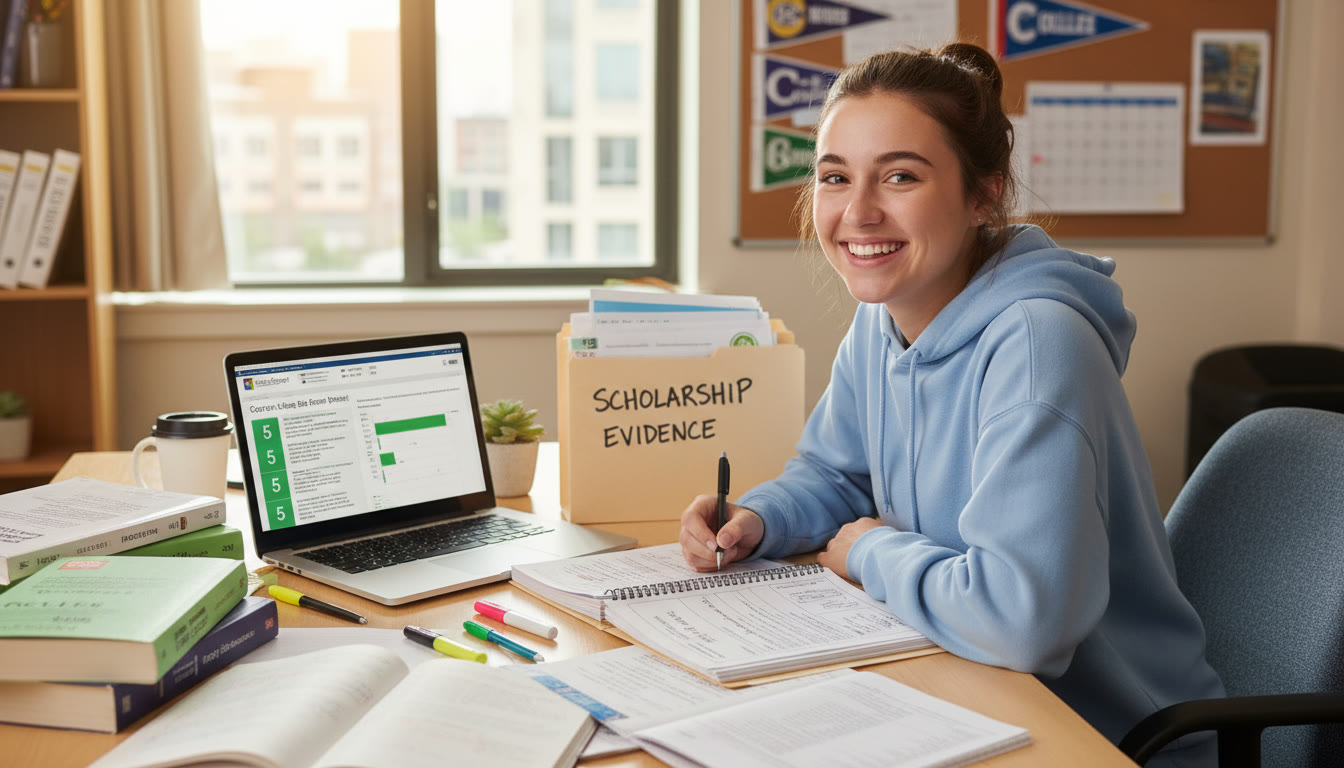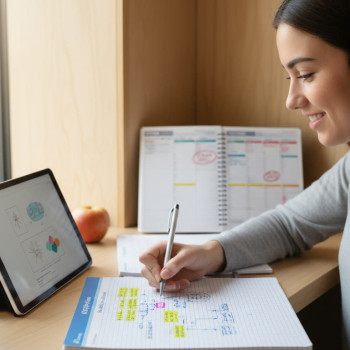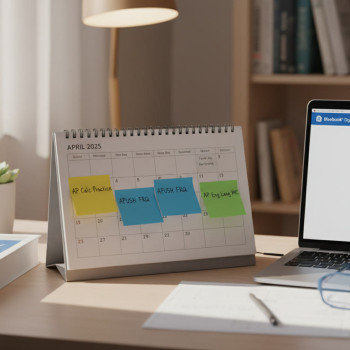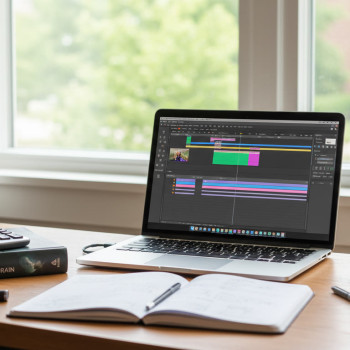Why Evidence Matters More Than Ever
Applications for scholarships and competitions are stories told with proof. Admissions officers and selection committees don’t just want to know that you’re passionate or hardworking — they want to see the proof: the test scores, the sustained projects, the measurable impact. In an era of crowded applicant pools, well-organized evidence is the difference between “good” and “unforgettable.”

Who this guide is for
This guide is written for motivated high school students (and their parents) preparing AP coursework, aiming to transform academic achievements and extracurricular work into compelling evidence for scholarships and competitions. You’ll get practical tactics, examples, a timeline, and a reproducible checklist you can adapt to any application.
Start With the Right Mindset: Evidence Is a Narrative Tool
Think of evidence as chapters of your academic narrative. Each piece of proof—an AP score, a research abstract, a successful community project—functions like a strong paragraph in an essay. Alone, they tell facts. Together, they show growth, commitment, and impact.
Three roles evidence plays
- Credibility: Concrete data (scores, awards, publications) backs up claims in your essays and interviews.
- Differentiation: Uncommon projects or measurable impact separate you from others with similar grades.
- Context: Evidence shows not only what you did, but why it mattered and what you learned.
Types of Evidence You Should Collect
Successful applicants use a mix of quantitative and qualitative evidence. Below are the most persuasive categories and specific examples of each.
Quantitative Evidence
- AP Scores: Official score reports, especially high or subject-advanced scores, demonstrate content mastery. Use them where subject alignment helps (e.g., AP Biology for a biology scholarship).
- Grades and GPA Trends: Semester transcripts that show steady improvement or excellence in relevant courses.
- Competition Placements and Metrics: Placement ranks, number of teams managed, measurable outcomes (e.g., 30% increase in turnout at a coding club hackathon).
- Research Data: Sample sizes, results, citations, and any metrics showing significance.
Qualitative Evidence
- Project Summaries: Short descriptions that explain the problem, your role, the solution, and the impact.
- Recommendation Letters: Letters that point to specific moments or skills, not just general praise.
- Portfolios and Work Samples: Essays, lab reports, code repositories, artwork, or recorded presentations.
- Reflection Statements: Personal reflections that tie experience to growth and future goals.
Collecting Evidence: Practical Steps
Collecting evidence is half strategy and half habit. Start early. A single habit—saving proof as you finish a project—prevents frantic searches later.
Step-by-step evidence collection
- Create a central folder: Digital (Google Drive, Dropbox) + one physical binder. Name clearly: Year_Subject_Type (e.g., 2025_APChemistry_Scores).
- Save official documents: AP score reports, transcripts, award certificates. Request certified copies when required.
- Document process: Keep lab notebooks, project logs, screenshots of progress, and meeting notes for group work.
- Ask early for recommendations: Provide recommenders with a short evidence packet so letters reference specifics.
- Record impact: Track metrics like attendance, funds raised, or improvement rates from any project you lead.
Organizing Evidence for Applications and Competitions
Once you’ve collected evidence, the next step is thoughtful organization. Committees should be able to scan your materials and immediately understand your achievements.
Folder structure example
| Folder | Contents | Purpose |
|---|---|---|
| Scores | Official AP score reports, SAT/ACT if needed | Quick verification of academic mastery |
| Transcripts | Official and unofficial transcripts, semester summaries | Shows GPA trends and coursework rigor |
| Projects | Project summaries, artifacts, presentations, metrics | Demonstrates sustained effort and impact |
| Recommendations | Contact info for recommenders, draft prompts | Ensures letters are targeted and prompt |
| Reflections | Personal statements, short reflections tied to evidence | Helps shape narrative and essay hooks |
Labeling and metadata
When saving digital files, include metadata in the filename: Date_Type_Project_Outcome (e.g., 2025-05_LabReport_OzoneReduction_Results.pdf). This small habit speeds retrieval and prevents confusion when a committee asks for a specific document.
Writing About Evidence: Make Your Claims Verifiable
Strong claims need visible anchors. When your essay says “I led a team,” anchor it with exact details: team size, timeline, result, and a metric. That makes your claim believable and easy for committees to verify.
Template: Evidence-backed sentence
“As lead organizer of the Community Science Fair (2024), I coordinated a team of 12 students over six months to increase neighborhood attendance from 120 to 350 visitors, raising $2,400 for school science kits.”
How to weave evidence into your personal statement
- Start with a vivid moment, then back it up with specific evidence.
- Use numbers and documents to support claims—AP scores or a published poster make an anecdote persuasive.
- Reflect on what you learned; don’t let evidence stand alone. Tie it to growth.
Examples: Turning Different Achievements into Strong Evidence
Below are common student scenarios and how to present evidence effectively.
Example 1 — AP Scores and Subject Strength
Situation: You scored a 5 on AP Calculus BC and plan to major in engineering. Evidence strategy: include the official score, list calculus-based projects (robotics, math team), and attach a project summary showing where you applied calculus to real-world design. Mention teachers who can attest to your problem-solving skills.
Example 2 — Research or Lab Work
Situation: You participated in a summer research program with preliminary results. Evidence strategy: submit the abstract, lab notebook excerpts, a short poster PDF, and a mentor’s letter that describes your role and the novelty of the work.
Example 3 — Community Impact Project
Situation: You organized a tutoring program that improved middle school reading scores. Evidence strategy: provide pre/post metrics, testimonials, a short video script summary saved as a transcript, and photos of sessions (with permissions).
Timelines and Deadlines: Plan Backwards
Great applications rarely happen at the last minute. Planning backward from deadlines gives you space to collect official documents, request strong recommendations, and refine your narrative.
6–12 months before deadline
- Identify scholarships/competitions and their required evidence.
- Begin collecting quantitative evidence (order official AP score reports if needed).
- Start drafting personal statements and project summaries.
3–6 months before deadline
- Ask recommenders and provide them with an evidence packet.
- Finalize metrics and write concise project impact statements.
1–2 months before deadline
- Complete final edits, ensure official documents are ready, upload materials to application systems.
- Do a final verification sweep to confirm all evidence is legible, properly labeled, and accessible.
Sample Evidence Checklist (Use This Every Time)
| Item | Required? | Where to Get It |
|---|---|---|
| Official AP Score Report | Often | College Board account |
| Transcript | Usually | School registrar |
| Project Summary (1 page) | Always | Student-prepared |
| Recommendation Letter | Often | Teacher/Mentor |
| Portfolio or Artifacts | When relevant | Student-prepared files |
| Impact Metrics | Recommended | Project logs or surveys |
How to Phrase Evidence in Application Forms and Interviews
Be concise, concrete, and humble. Committees are savvy—exaggeration backfires. When asked to describe an achievement, use the Problem–Action–Result formula and add a single sentence about the broader lesson.
Formula example
“Problem: Low community participation in STEM outreach. Action: Launched a monthly hands-on workshop attended by 80 kids over six months. Result: Volunteer team grew from 3 to 15 and the program secured $1,000 in seed funding. Lesson: Sustained engagement requires simple, repeatable activities and clear volunteer roles.”
Authenticity and Integrity: Don’t Manufacture Evidence
Integrity matters. A single unverifiable claim can lead to disqualification. If you can’t document something, frame it as a formative experience and emphasize learning rather than overstating impact.
What to avoid
- Fabricated data or inflated metrics.
- Using anonymous testimonials without consent or verification.
- Relying solely on vague praise in recommendation letters—encourage specific anecdotes.
Leveraging Support: When to Get Help
Organizing evidence and polishing application materials can feel like learning a second language. That’s where targeted support helps. If you want personalized feedback on which pieces of evidence matter most or help tailoring your narrative, expert 1-on-1 guidance can streamline the process.
How personalized tutoring helps (naturally fitting)
One-on-one tutors can review your evidence packet, suggest which AP scores and projects to highlight, help draft concise project summaries, and prepare you for interviews. Tools that blend human expertise with AI-driven insights can quickly surface the strongest pieces of evidence and suggest precise wording for applications. Sparkl’s personalized tutoring, for example, offers tailored study plans and expert feedback that many students find useful when they need to both improve subject mastery and present evidence persuasively.
Common Pitfalls and How to Fix Them
Don’t let small mistakes sink a strong profile. Below are common pitfalls and practical fixes.
Pitfall: Scattered evidence
Fix: Consolidate into a single digital folder; use a short index document that lists key items and where they are.
Pitfall: Vague recommendations
Fix: Provide recommenders with a one-page sheet summarizing your achievements and suggesting anecdotes they could mention.
Pitfall: Late official reports
Fix: Order early. If timing is tight, submit unofficial copies first and promise official verification; explain the timeline in a concise note.
Final Checklist Before You Submit
- All files are labeled and legible.
- Official documents ordered and scheduled for delivery if needed.
- Recommendation letters requested with at least 4 weeks’ lead time.
- Project summaries are one page and follow the Problem–Action–Result structure.
- At least one piece of evidence directly supports each major claim in your application.
- Backups: a physical binder and a second cloud copy in case of technical issues.

Closing Thoughts: Make Your Evidence Tell a Human Story
Evidence is powerful because it transforms abstract claims into verifiable moments. Use numbers for credibility, stories for connection, and reflection for meaning. The most memorable applications are not those that only list accomplishments; they are the ones that use evidence to show who you are, how you think, and what you’ll contribute next.
Start early, be organized, and don’t hesitate to seek targeted help to shape your narrative. A few well-chosen, well-documented pieces of evidence often matter far more than a long list of minor achievements. With thoughtful evidence, clear writing, and honest reflection, you’ll give scholarship and competition committees the confidence to invest in your potential.
Good luck — collect the facts, tell your story, and let your evidence do the convincing.

















No Comments
Leave a comment Cancel